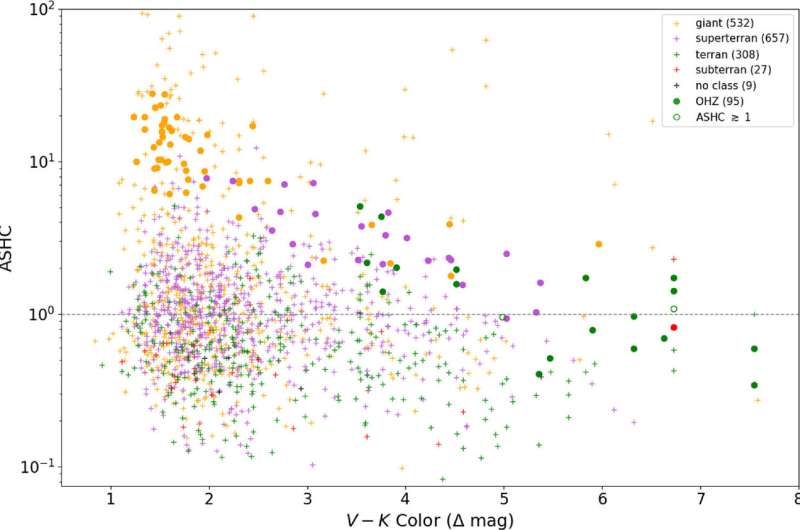This article has been reviewed according to Science X's editorial process and policies. Editors have highlighted the following attributes while ensuring the content's credibility:
fact-checked
peer-reviewed publication
trusted source
proofread
Effects of stellar magnetism could expand criteria for exoplanet habitability

Interest in Earth-like planets orbiting within the habitable zone of their host stars has surged, driven by the quest to discover life beyond our solar system. But the habitability of such planets, known as exoplanets, is influenced by more than just their distance from the star.
A new study by Rice University's David Alexander and Anthony Atkinson extends the definition of a habitable zone for planets to include their star's magnetic field. This factor, well studied in our solar system, can have significant implications for life on other planets, according to the research published in The Astrophysical Journal on July 9.
The presence and strength of a planet's magnetic field and its interaction with the host star's magnetic field are pivotal factors in a planet's ability to support life. An exoplanet needs a strong magnetic field to protect it from stellar activity, and it must orbit far enough from its star to avoid a direct and potentially catastrophic magnetic connection.
"The fascination with exoplanets stems from our desire to understand our own planet better," said Alexander, professor of physics and astronomy, director of the Rice Space Institute and member of the Texas Aerospace Research and Space Economy Consortium. "Questions about the Earth's formation and habitability are the key drivers behind our study of these distant worlds."
Magnetic interactions
Traditionally, scientists have focused on the "Goldilocks Zone," the area around a star where conditions are just right for liquid water to exist. By adding the star's magnetic field to the habitability criteria, Alexander's team offers a more nuanced understanding of where life might thrive in the universe.
The investigation focused on the magnetic interactions between planets and their host stars, a concept known as space weather. On Earth, space weather is driven by the sun and affects our planet's magnetic field and atmosphere. For the study, the researchers simplified the complex modeling usually required to understand these interactions.
The researchers characterized stellar activity using a measure of a star's activity known as the Rossby number (Ro): the ratio of the star's rotation period to its convective turnover time. This helped them estimate the star's Alfvén radius—the distance at which the stellar wind effectively becomes decoupled from the star.
Planets within this radius would not be viable candidates for habitability because they would be magnetically connected back to the star, leading to rapid erosion of their atmosphere.
By applying this approach, the team examined 1,546 exoplanets to determine if their orbits lay inside or outside their star's Alfvén radius.
Life elsewhere in the galaxy
The study found that only two planets, K2-3 d and Kepler-186 f, of the 1,546 examined met all the conditions for potential habitability. These planets are Earth-sized, orbit at a distance conducive to the formation of liquid water, lie outside their star's Alfvén radius and have strong enough magnetic fields to protect them from stellar activity.
"While these conditions are necessary for a planet to host life, they do not guarantee it," said Atkinson, a graduate student of physics and astronomy and lead author of the study. "Our work highlights the importance of considering a wide range of factors when searching for habitable planets."
The study also underscores the need for continued exploration and observation of exoplanetary systems, drawing lessons from the sun-Earth system. By expanding the criteria for habitability, the researchers provide a framework for future studies and observations to work toward determining whether we are alone in the universe.
Alison Farrish, a postdoctoral researcher at the NASA Goddard Space Flight Center and former Rice graduate student, is also an author of this study.
More information: Anthony S. Atkinson et al, Exploring the Effects of Stellar Magnetism on the Potential Habitability of Exoplanets, The Astrophysical Journal (2024). DOI: 10.3847/1538-4357/ad4605
Journal information: Astrophysical Journal
Provided by Rice University





















